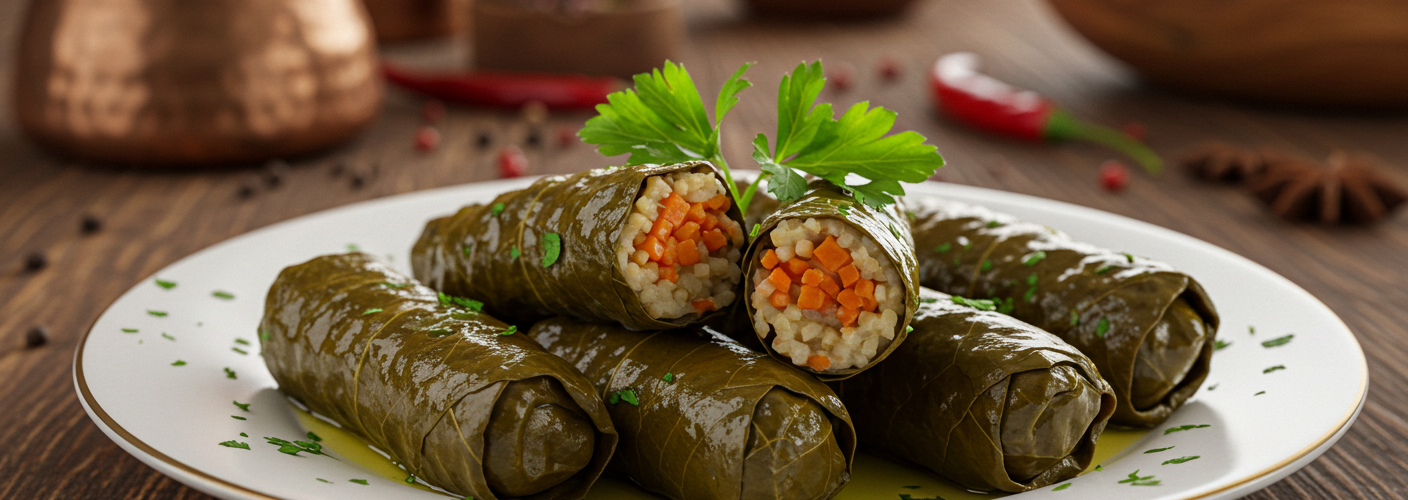Turkish cuisine is a vibrant tapestry of flavors, colors, and aromas, reflecting a rich history and diverse cultural influences. One of the most beloved dishes within this culinary tradition is “Dolma,” particularly the exquisite stuffed grape leaves known as Turkish Dolma. This dish, cherished by many, holds a special place at family gatherings, special occasions, and casual dinners across Turkey and beyond.
The Essence of Dolma
Dolma, derived from the Turkish word “dolmak,” meaning “to be stuffed,” encompasses a variety of stuffed vegetable dishes. While pumpkin, eggplant, and peppers are often used, one of the most iconic versions features grape leaves wrapped around a savory filling. These delicate leaves bring an earthy, slightly tangy flavor that complements the stuffing beautifully.
Ingredients That Matter
The traditional filling for Turkish Dolma typically consists of a mixture of rice, pine nuts, currants, and a medley of fresh herbs and spices like dill, parsley, and mint, providing depth and aroma. For those who enjoy a heartier dish, meat, usually ground lamb or beef, can also be integrated into the filling. The balance of spices is crucial, as they should enhance rather than overpower the natural flavors of the grape leaves and other ingredients.
Preparation: A Labor of Love
Preparing Turkish Dolma is an art that requires patience and precision. The grape leaves must be carefully blanched to soften them, making them pliable for rolling. After cooling, the leaves are laid flat, and a spoonful of the filling is placed near the stem end of the leaf. The edges are tucked in, and the leaves are rolled tightly to secure the filling, forming neat little packages.
Cooking begins with placing the dolmas in a pot, often layered with slices of lemon and drizzled with olive oil. Water or broth is added to keep the dolmas moist during cooking. They are traditionally simmered gently, allowing the flavors to meld for about 45 minutes to an hour, creating a dish that is aromatic and inviting.
Cultural Significance
Dolma is more than just a dish; it embodies the warmth of Turkish hospitality. It is often served as an appetizer or a main course, shared among family and friends. The art of making dolma is sometimes passed down through generations, each family adding their unique twist to the recipe. During special occasions such as weddings and religious celebrations, dolma frequently takes center stage on the dining table, symbolizing abundance and togetherness.
Serving and Enjoying Dolma
Once cooked, Turkish Dolma can be served warm or at room temperature, often accompanied by a side of yogurt or a light salad. The cool tang of yogurt complements the savory richness of the dolma, enhancing the experience. As a versatile dish, dolma can be enjoyed as part of a larger mezze platter or as a standalone delicacy.
Conclusion
Turkish Dolma, with its intricate flavors and beautiful presentation, exemplifies the spirit of Turkish cuisine. Whether you are a seasoned chef or a home cook, exploring this dish is an opportunity to connect with a rich culinary heritage. So gather your ingredients, invite friends and family, and embark on a flavorful journey with Turkish Dolma—where every bite tells a story of tradition, love, and deliciousness.




Add comment